The rate of air exchange in the gym: the rules for arranging ventilation in the gym
Modern gym orfitness the center is not just a place where competitions and training are held. This is a complete complex, divided into many segments. And for normal operation it is necessary to take into account a huge number of factors, including competent air recirculation in the premises.
Agree, for a full-fledged training, it is important that the air in the gym is regularly updated. And who wants to play sports indoors, where it smells bad?
In this article we will analyze in detail what should be the multiplicity of air exchange in the gym and what kind of joint venture everything should correspond to. We will also offer several options for solving this issue, depending on the size of the gym and the types of rooms in it.
The content of the article:
Regulatory requirements for the arrangement of the gym
Acting SP 118.13330.2012 - The main document, according to which all norms are calculated.
Highlights look like this:
- For each athlete or trainee, the ventilation system must provide a minimum of 80 cubic meters. meters of air per hour. For each viewer - at least 20. In large halls with large stands it is recommended to equip separate air circulation systems in the stands.
- Exhaust air must be removed immediately. This applies not only to the immediate place of training or sporting events, but also to the rest of the premises.
- When creating a project, additional factors must be taken into account, such as increased sweat and heat.
Another point that needs to be taken into account is the heterogeneity of the rooms. Even similarly appointed rooms have different requirements. For example, the minimum allowable temperature in the gym should not fall below 15 degrees.
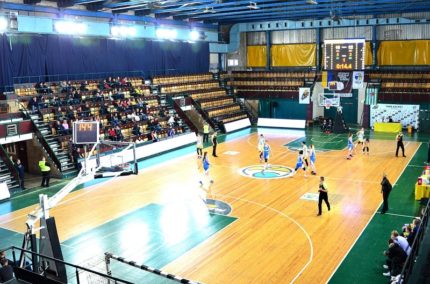
But, if we are talking about a room where visitors get a small load, for example, yoga rooms, then the minimum temperature in them should be at least 18 degrees.
But the gym also includes more specific places: changing rooms, showers, saunas, utility rooms, office buildings. And for each of them its own norm is separately provided.
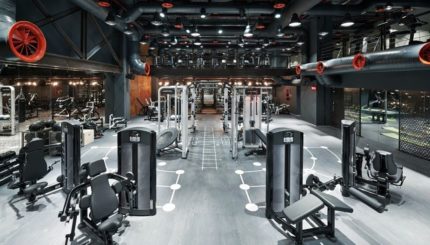
What should be considered when designing?
When designing, first of all, it is necessary to make calculations. We have already said that for each athlete or training should account for at least 80 cubic meters of air per hour, and for each viewer another 20.
But here it is worth adding another category - staff. For each employee of the gym, it is necessary to provide air circulation of 40 cubic meters of air.
Thus, the formula will look like this:
V = N1 * L1 + N2 * L2 + N3 * L3where
N1 - the number of trainees, L1 - air exchange rate for them. N2 - the number of spectators, L2 - air exchange rate for them. N3 - the number of employees, L3 - air exchange rate for them.
Mobility standardsaeromass
When developing a project and choosing equipment, one more important factor must be taken into account - movementaeromass. In simple terms, there should be no drafts in the gym.
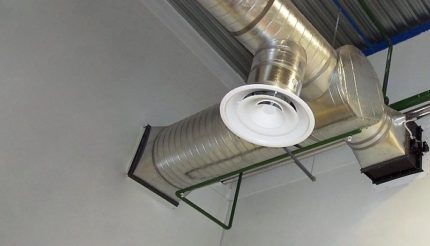
In the aforementioned joint venture, this moment is provided for, the ventilation of gyms has the following standards:
- pools - no more than 0.2 m / s;
- gyms for intensive training - not more than 0.3 m / s;
- halls for preparatory and recreational activities - no more than 0.5 m / s.
The situation is inversely proportional to the norms of the temperature regime. Directly for training sites, the air movement should be no more than 0.3 m / s. But, if we are talking about premises for yoga, then the norms are softer.
Other important factors
Calculate the required air handling unit power and movementaeromass - not all that needs to be considered when designing a gym. There are several important points.
Firstly, a place to install equipment. It should not be near sports or any other equipment. It is desirable that the ventilation system has a remote control - this will eliminate many inconveniences.
Secondly, showers and changing rooms. Despite its small size in area, do not neglect the arrangement of ventilation in these rooms. With insufficient ventilation, they form condensateand after him mold, which can spread to other rooms and halls.
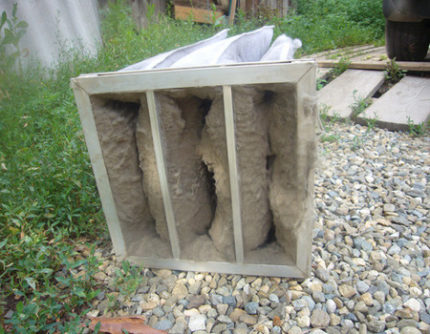
Thirdly, filters. As a rule, air is taken from the street. Equip filter ventilation system, for maximum comfort. This is especially true for large cities and halls located next to the industrial zone.
Another recommendation that all experts give is to count on the project with a margin. An emergency situation can always happen and part of the equipment will fail or the calculations for visitors will be incorrect, and more people will visit the hall. Recommended margin - 15-20% of the initial calculations.
Types of ventilation used in gyms
There are three different types of air exchange systems that are recommended for use in gyms.
Channel. The duct system provides fresh air circulation throughout the room, and exhausts of various capacities are used to extract fresh air and remove old ones. Ideal for small rooms.
Central air conditioning. The system is responsible for maintaining the desired air temperature. Most often it is used infitnesscenters.
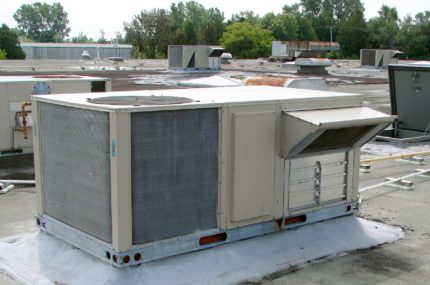
Monoblock roof installation. This is the older brother of central air conditioners. Most often used in indoor stadiums and large sports complexes.
Ventilation system options
There are a huge number of recommendations that should be taken into account when installing ventilation in gyms and regulating air exchange. We will consider two options - for small gyms and largefitnesscenters.
Option number 1 - a solution for a small gym
For small halls, the installation of duct ventilation is an ideal option. It allows you to assemble the installation of the required power without spending extra money. The duct ventilation system consists of three main elements: duct fan, heater and filter.
One advantage is the relatively easy installation. You can hide the channel ventilation under a false ceiling or in the utility room.
To maintain the temperature, you can use various types of air conditioners and radiators. As practice shows, there are no issues with temperature conditions in such rooms.
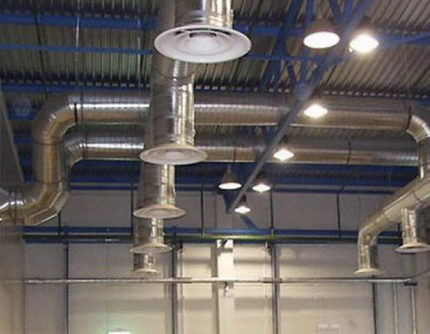
Ducted air exchange system provides fresh air and remove old air. In this case, you do not need to bother with the arrangement of showers and saunas, as a rule, they simply do not exist.
Option number 2 - ventilation in fitness center
Even rough estimates show that for a large sports center it is necessary to use powerful ventilation and air exchange systems. The ideal solution would be to install equipment on the roof.
This will significantly save space, provide easy access if necessary, while the entrance to the roof for outsiders will be closed.
The system is complex and consists of several elements. Air conditioners and fans to maintain the desired temperature. Heaters, radiators and other heating systems for heating rooms in the cold season. Filters for cleaning the incoming air and a network of ducts.

It is recommended to install recuperators to save electricity for heating the air.
Changing rooms for showers and saunas
Now let's talk in more detail about showers and changing rooms. Install air circulation systems for them separately. The air in the locker rooms should be supplied in a volume twice the volume of the room and 5 times the volume of showers.
The air from the locker rooms is discharged in double volume through the showers. However, if the difference in the volume of air in the showers is 10 times greater, then it is displayed through the locker rooms.
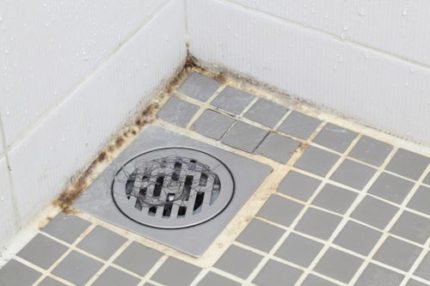
Showers and changing rooms can be combined with a common air exchange system. But, if the temperature is below 25 degrees, then you need to install heaters.
Key mistakes and how to avoid them
Designing an air exchange system and installing equipment is a complex and complex process. Naturally, this may cause errors.Let's take a look at the most common mistakes and see how they can be avoided.
Errors in load calculations. The first thing you can encounter is that there were much more visitors than expected. On the one hand, this is good, but the air exchange system may not be able to cope with this. We already said above that it’s worth additionally laying 15-20% of the power from the peak load of the gym.
If this is not enough, then the only way to fix the problem is to replace the equipment with a more powerful one. Remember that the avaricious pays twice, and in this case the amount of equipment replacement can be several times more.
Lack of ventilation system. This most often happens when a room is transferred from housing to non-residential. On paper, often an air exchange system exists, but in practice it may not work or may not be designed correctly.
Calculation of natural ventilation. Large open windows can provide fresh air and remove old ones. And this will be enough if few people are engaged in the hall. But with an increase in visitors, natural air exchange will be lacking. The room instantly reigns stuffiness and a persistent smell of sweat.
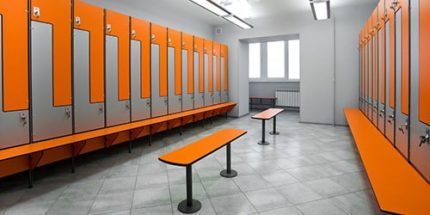
Ignoring small rooms. We are talking primarily about showers, saunas and locker rooms. They occupy a small area, but require significantly more power than the space for classes and training.
If you take into account all these factors and lay them in the project, then problems with ventilation should not arise.
Conclusions and useful video on the topic
Arrangement of supply and exhaust ventilation with recovery:
Another option for arranging the ventilation system in the gym:
We examined in detail all the norms provided by the joint venture, and also examined how to equip the ventilation system in the gym. For small gyms, you can develop a project yourself.
But when it comes to large halls, stadiums andfitnesscenters, we recommend that such a voluminous and complex work is best entrusted to professionals. This will not only save a lot of time, but also provide maximum comfort to your customers during training in the gym.
If you have questions about the topic of the article or want to supplement the material with valuable information, please leave your comments in the communication section located under the article.

 Frequency rate of air exchange in office premises: norms and rules for the organization of proper air exchange
Frequency rate of air exchange in office premises: norms and rules for the organization of proper air exchange 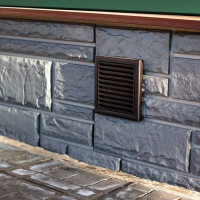 Natural ventilation in a private house: rules for arranging a gravitational air exchange system
Natural ventilation in a private house: rules for arranging a gravitational air exchange system 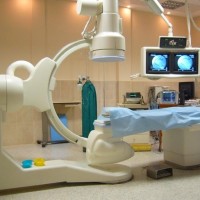 Ventilation and air conditioning for medical institutions: rules and features of the arrangement of ventilation
Ventilation and air conditioning for medical institutions: rules and features of the arrangement of ventilation  Checking ventilation at school: norms and procedures for checking the effectiveness of air exchange
Checking ventilation at school: norms and procedures for checking the effectiveness of air exchange  Air exchange in dentistry: norms and subtleties of arranging ventilation in a dental office
Air exchange in dentistry: norms and subtleties of arranging ventilation in a dental office  Requirements for air humidity in the catering unit: norms and rules for arranging ventilation in the catering unit
Requirements for air humidity in the catering unit: norms and rules for arranging ventilation in the catering unit  How much does it cost to connect gas to a private house: the price of organizing gas supply
How much does it cost to connect gas to a private house: the price of organizing gas supply  The best washing machines with dryer: model rating and customer tips
The best washing machines with dryer: model rating and customer tips  What is the color temperature of light and the nuances of choosing the temperature of the lamps to suit your needs
What is the color temperature of light and the nuances of choosing the temperature of the lamps to suit your needs  Replacement of a geyser in an apartment: replacement paperwork + basic norms and requirements
Replacement of a geyser in an apartment: replacement paperwork + basic norms and requirements